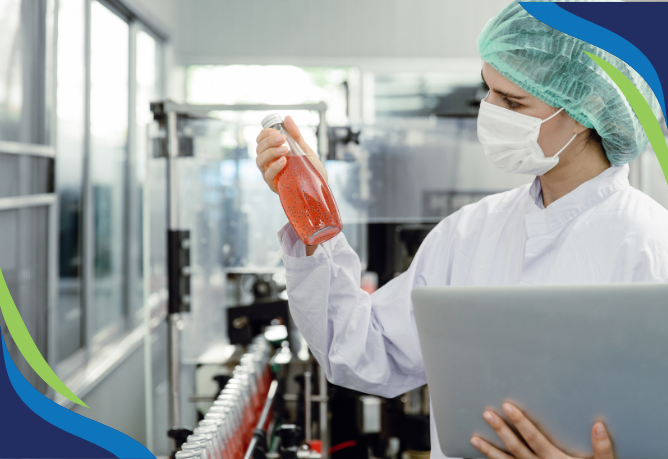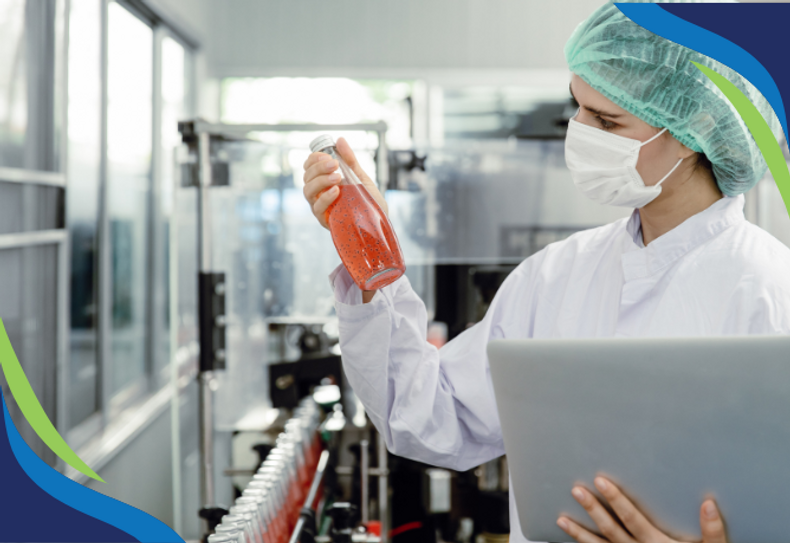
Probing into the territory of food safety prompts us to consider the complex processes involved in ensuring that the food we consume is free from harmful contaminants. Essential to this discussion is the study of the chemicals utilized in food sanitation, raising critical questions about their efficacy, safety, and impact on human health and the environment.
When we consider the chemicals employed to sanitize food, it becomes clear that a delicate balance must be struck between effectively eliminating pathogens and minimizing potential risks to consumers. Commonly used sanitizing agents include chlorine-based compounds, quaternary ammonium compounds, hydrogen peroxide, and ozone, each with its unique properties and applications.
Chlorine-based sanitizers, for instance, are widely used in food processing facilities and restaurants for their broad-spectrum antimicrobial activity. However, concerns have been raised about the formation of harmful disinfection by-products when chlorine interacts with organic matter in water, such as trihalomethanes and chloramines, which may pose health risks if consumed in high concentrations over prolonged periods.
Quaternary ammonium compounds, another prevalent class of sanitizers, are valued for their effectiveness against a wide range of microorganisms and their residual antimicrobial activity. Yet, studies have suggested that prolonged exposure to quaternary ammonium compounds may contribute to the development of antimicrobial resistance and allergic reactions in sensitive individuals, underscoring the need for cautious use and proper risk assessment.
Hydrogen peroxide, a versatile oxidizing agent, is favored for its rapid antimicrobial action and eco-friendly nature, as it decomposes into water and oxygen without leaving harmful residues. However, concentrations above certain levels may cause skin and eye irritation, emphasizing the importance of proper handling and dilution protocols to mitigate potential hazards.
Enter ozone, a powerful oxidant and a breakthrough technology in the realm of food sanitation. Ozone boasts impressive antimicrobial properties, effectively neutralizing bacteria, viruses, fungi, and protozoa without leaving chemical residues. Moreover, ozone rapidly decomposes into oxygen, making it an environmentally sustainable alternative to traditional sanitizing agents.
Recent interruptions and challenges have highlighted the importance of proactive measures to mitigate risks and reinforce resilience within supply chains. Among the arsenal of advanced sanitization techniques, ozone treatment emerges as an impressive solution, offering unmatched benefits in improving food safety across the supply chain.
Ozone food sanitation, also known as o3 food sanitation, has gained traction as a powerful tool for combating pathogens and contaminants in the food industry. Leveraging ozone's potent oxidizing properties, ozone food sanitation systems effectively neutralize bacteria, viruses, and other harmful microorganisms on various surfaces and in water. This technology serves as a strong line of defense against contamination, ensuring that food products meet the highest hygiene standards from production to consumption.
One of the key advantages of ozone food sanitation is its versatility. Ozone can be applied at different stages of the food supply chain, including food production, processing, packaging, storage, and transportation. Whether it's disinfecting equipment, sanitizing food contact surfaces, or purifying wash water, ozone technology offers a comprehensive solution to safeguarding food quality and integrity.
Moreover, ozone food sanitation is environmentally friendly and sustainable. Unlike traditional chemical sanitizers, ozone decomposes rapidly into oxygen without leaving any harmful residues or by-products. This makes it an ideal choice for organic food production and aligns with the growing consumer demand for eco-friendly food processing practices.
In the seafood industry, ozone seafood technology plays a central role in preserving the freshness and safety of seafood products. Ozone treatment effectively removes pathogens and extends the shelf life of seafood by inhibiting bacterial growth and reducing spoilage. By implementing ozone seafood technology, seafood processors can safeguard their products to meet stringent quality standards and regulatory requirements.
Similarly, in the dairy industry, ozone sanitation plays a vital role in maintaining the safety and quality of dairy products. Ozone treatment can be used to sanitize equipment, storage tanks, and processing facilities, reducing the risk of bacterial contamination, and ensuring the integrity of dairy products from farm to table.
Ozone can be used to wash fruits and vegetables, effectively removing surface contaminants such as pesticides, pathogens, and dirt. This helps enhance food safety and reduces the risk of foodborne illnesses. Ozone generators can be installed in cold storage facilities to sanitize the air and surfaces, preventing the growth of mold, mildew, and bacteria. This helps extend the shelf life of perishable food products stored in cold environments.
Ozone can be used to disinfect meat and poultry processing equipment, reducing the risk of bacterial contamination, and improving overall hygiene. It helps ensure that meat products meet safety standards and regulatory requirements.
Ozone sanitation also plays a critical role in food transportation. By incorporating ozone sanitation systems into food storage facilities and transport vehicles, businesses can prevent cross-contamination and ensure that perishable goods reach consumers in optimal condition.
Custom ozone generators offer businesses the flexibility to tailor ozone treatment protocols to their specific needs and requirements. Whether it's adjusting ozone concentration levels or designing custom sanitation systems, custom ozone generators empower food industry participants to boost their sanitization processes for maximum efficacy and efficiency.
In conclusion, ozone treatment represents a game-changing solution for enhancing food safety and mitigating risks within the food industry. By harnessing the power of ozone food sanitation, businesses can reinforce resilience, maintain supply chain integrity, and instill consumer confidence in the safety and quality of food products. As the food industry continues to evolve, investing in ozone treatment technologies will be essential for staying ahead of the curve and ensuring a sustainable future for food production and distribution.

